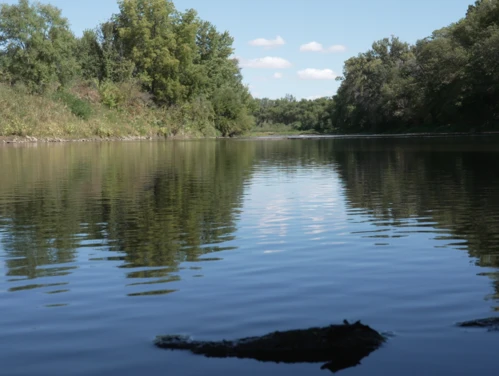DES MOINES – Warmer temperatures and rainfall deficits in October have led to deteriorating drought conditions across the state, according to the latest Water Summary Update.
Reduced rainfall since late summer finally took a toll as drought returned to the state in early October and expanded in southeastern and northwestern Iowa. Much of the state is experiencing abnormally dry or moderate drought conditions, with portions of southeast Iowa carrying a drought watch designation.
At the end of October, Iowa’s statewide precipitation totaled 2.06 inches, or 0.62 inches below normal. Some reporting stations in northwest and southeast Iowa showed deficits of one to two inches or more for the month. Statewide temperatures averaged 57.2 degrees for the month, 6.2 degrees above normal, ranking it near the top 15th warmest October in the 153-year record.
The U.S. Drought Monitor (USDM) shows that two-thirds of Iowa is abnormally dry, with moderate drought impacting both the southeastern and northwestern regions. According to Iowa’s Drought Plan, nearly all drought regions experienced worsening conditions in October, with the sole exception in southwestern Iowa, where conditions remained mostly unchanged. Despite these widespread precipitation deficits, the southeast drought region is the only area currently under a drought watch.
The National Weather Service’s Climate Prediction Center’s November outlook indicates an equal chance for above, below, or near-average precipitation across the entire state and an increased likelihood of warmer-than-average temperatures. The seasonal outlook suggests continued concern for drought development in areas where deficits are already established, particularly in southeastern Iowa.
“After several months of rain deficits, drought returned and expanded across much of the state in October, coinciding with our entry into the typically drier time of the year. This persistent dryness has led to a drought watch designation for southeastern Iowa. Looking ahead, the latest seasonal outlooks indicate that there is potential for additional drought development in the southeastern region, with dry conditions likely persisting through January,” said Jessica Reese McIntyre, DNR Environmental Specialist.
For a thorough review of Iowa’s water resource trends, visit
www.iowadnr.gov/watersummaryupdate.
The report is prepared by technical staff from Iowa DNR, the Iowa Department of Agriculture and Land Stewardship, IIHR—Hydroscience and Engineering, and the U.S. Geological Survey, in collaboration with Iowa Homeland Security and Emergency Management Department.
